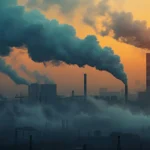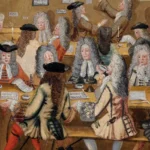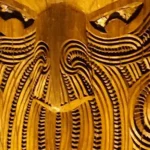Deceptive publishing (more commonly known as “predatory publishing”) is an important and troubling issue in scholarly communication. However, its parameters and seriousness are a matter of controversy, and there is not yet any consensus as to how big an issue it is, how fast it is growing, the variety of its manifestations, and what (if anything) can be done to combat it. The broad outlines of deceptive publishing, as described in this brief, are clearer than its exact details.
D
eceptive publishing is a practice whereby a company creates a journal on false pretenses for the purposes of defrauding authors, helping authors deceive their colleagues, or both. Deceptive journals are almost invariably funded by author-side article processing charges (APCs). The publisher makes its money by promising rigorous peer review and editorial oversight, but in fact accepting all papers that are submitted and accompanied by an APC, thus providing a service to authors in need of publication while misrepresenting the process by which its articles are selected.
What do deceptive publishers lie about?
Because they are engaged in selling the false credential of selective and prestigious publication, deceptive journals typically misrepresent themselves according to markers of prestige. These include:
- Peer review. Deceptive journals usually claim to provide rigorous peer review, but in fact accept all submissions.
- Editors/editorial board. Deceptive journals often claim as editors, or as members of their editorial boards, people who have not given their consent.
- Indexing. These journals often falsely claim to be listed in prestigious journal indexes.
- Journal Impact Factor (JIF). False claims of a high JIF are pervasive among deceptive journals.
- Affiliation. Deceptive journals will often pretend to be associated with prestigious organizations.
- Physical location. Publishers of deceptive journals will often pretend to be headquartered in prestigious locations, such as New York or London.
What has led to this development?
Several factors have combined to create a welcoming environment for deceptive publishing practices. Most notably, they include:
- Academic incentives. Academic authors are generally required to publish in high-ranking peer-reviewed journals in order to keep their jobs and advance their careers. In some academic and institutional cultures, this requirement may be expressed in very strictly quantitative terms, which creates an incentive for authors to pad their CVs with fake but legitimate-looking peer-reviewed publications.
- Quantitative reputation measures. The emergence of quantitative reputation measures, most notably the JIF, has created a criterion (“impact”) that is simultaneously highly desirable to tenure-seeking academics and easily faked.
- Emergence of author-pays publishing models. The single most important factor in the growth of deceptive publishing has been the emergence of models whereby the author (rather than the journal subscriber) covers all costs of publication. The author-pays model has emerged in response to the rapid growth in demand for more publishing venues (as global research output continues to increase), and also to global efforts over the last 20 years to make more scholarly literature freely available to the public on an open access (OA) basis; APC-funded journals and papers are invariably open access. The APC-based funding model creates a conflict of interest for the publisher: the journal’s interest in publishing only rigorous scholarship conflicts with its interest in maintaining a robust revenue stream.
- Lack of oversight incentives. Where governments, universities, and systems of higher education make strict quantitative publishing measures the most important criteria for academic advancement, their only incentive to monitor the genuine quality of their faculty’s publications is an altruistic one: the desire to preserve the integrity of the scholarly literature.
Who is harmed?
Deceptive publishing creates at least four categories of victim:
- Authors. In some cases, the victim of deceptive publishing scams is the author, who sincerely believes s/he is submitting work to a legitimate journal and is being deceived into paying for services that are not actually being provided. In many cases, authors are deceived by direct email solicitations that include false promises of those services, usually with unreasonably fast turnaround.
- Colleagues. In other cases, the author submits work despite knowing full well that the journal is fraudulent, because s/he needs a stronger record of publication. In this scenario, the victim of the scam is the author’s institution and colleagues, who are being deceived about the author’s history of legitimate publication—the goal of this deception being to secure the author’s tenure and/or promotion.
- General public. Where fraudulent publishing practices result in the publication of bad science, the public can be harmed directly.
- Funding agencies. These agencies provide research funds in good faith and expect the resulting research reports to be subjected to rigorous editorial and peer review and published honestly.
Categories of Deceptive Journal
What follows is a proposed rough taxonomy of deceptive journals, as originally presented in a posting in the Society for Scholarly Publishing’s Scholarly Kitchen blog:
- Pseudo-scholarly journals. These are journals that falsely claim to offer authors real and meaningful editorial services (usually including peer review) and/or credible impact credentialing (usually in the form of a JIF), and thereby also falsely claim to offer readers rigorously vetted scientific or scholarly content. In this case, the content may or may not consist of legitimate scholarship—but the journal itself is only pretending to provide editorial and review services the purpose of which is to separate the legitimate from the phony. This is perhaps the largest category of deceptive publisher, and also one of the more controversial ones, since the line between dishonesty and simple ineptitude or organic mediocrity can be fuzzy.
- False-flag journals. These are scam publishing operations that set up websites designed to trick the unwary into believing that they are submitting their work to legitimate existing journals—sometimes by “hijacking” the exact title of the real journal, and sometimes by concocting a new title that varies from that of a legitimate journal only very slightly. The goal of these journals is to secure APCs from authors early in the submission and publication process, before the authors realize that they are submitting to a fake journal.
- Masqueraders. This looks like a variety of hijacking, except that there is no actual hijackee. In these cases, journals adopt titles designed to imply affiliation with a legitimate- and prestigious-sounding scholarly or scientific organization that does not actually exist. For example, a masquerader journal might call itself the American Medical Society Journal or Journal of the Royal Society of Physicians.
- Phony journals. These are journals that falsely claim to publish articles based on legitimate and dispassionate scientific or scholarly inquiry, selected without bias as to the reported research outcomes, when in fact they publish only articles that promote a product or support a specific commercial, political, or other agenda. Such journals may be made available on either a toll-access or an open-access basis. One notable example was the Australasian Journal of Bone and Joint Medicine, which was published by Elsevier and presented to the world as a journal of objective scholarship, but was later revealed as a promotional sock-puppet for a pharmaceutical company. Truly phony journals of this sort, though egregious, seem to be relatively rare.
Complicating factors
It’s not always easy to tell the difference between the behavior of a neophyte or meagerly-resourced journal and a genuinely deceptive one. For example, a new publisher may not understand that the JIF is a very specific metric that is only conferred by Clarivate Analytics, and may therefore erroneously (but honestly) claim a JIF based on private citation calculations. Similarly, it’s possible for an inexperienced publisher to believe that being indexed by Google Scholar is meaningful in a way similar to being indexed by, say, Scientific Journal Rankings, or to be still working out the kinks of its peer-review program.
It is also true that for whatever reason, a very large number of fraudulent publishers operate in Asia and Africa. Legitimate journals in these parts of the world often have fewer resources than journals in high income countries. In the past, the lower resources and sometimes different publishing styles of journals in low and middle income countries were conflated with deceptive journal practices, and journals were falsely identified as “predatory.” Such misidentification has the adverse effect of undermining lower-resourced journals. One key to avoiding this is to avoid conflating issues of deception and fraud with issues of journal appearance.
Bear in mind that there is a fundamentally important difference between failing to conduct sufficiently rigorous peer review and falsely claiming to provide peer review at all; not all legitimate journals are equally rigorous or of equally high quality. Lower-quality journals that operate on a fundamentally honest basis should not be lumped in with journals that operate on a fundamentally dishonest basis.
Another danger is that we might perpetuate the false impression that open access publishing and deceptive publishing are the same thing. While it is true that the great majority of fraudulent publishers make their content available on an OA basis, this is only because one particular mode of OA publishing (the author-pays model) lends itself uniquely well to this kind of fraudulent behavior by removing the market incentive to publish only high-quality science and scholarship.
This reality implies three very important considerations:
- First, we need to be very careful not to assume fraud where the problem might be inexperience or a lack of resources.
- Second, when dealing with the problem of deceptive publishing, we need to focus carefully on genuinely fraudulent behavior, as distinct from low-resource publishing. The goal is not to rid the marketplace of lower-quality journals, but to solve the problem of fraudulent publishing behavior.
- Third, we need to be careful not to tar the entire open access movement with the brush of deceptive publishing.
WORK THAT NEEDS TO BE DONE
The issue of what, if anything, should be done about deceptive publishing is a controversial one. Not everyone is aware that it exists; among those who are aware of it, not everyone agrees that it is a serious problem; not all of those who do see it as a serious problem agree on what remedies might be appropriate and/or effective. This suggests that the first very important thing that needs to be done about deceptive publishing is to achieve more widespread recognition of the problem, and something closer to consensus as to its significance.
How significant is it, really? There are clearly thousands of deceptive journals currently operating, though estimates of how many thousands of them vary quite widely. The blacklist currently curated by directory publisher Cabell’s currently includes about 10,000, but a study conducted in 2015 by BMC Medicine counted just under 12,000 (Shamseer 2017). Estimates of the output of these journals have ranged from a high of 450,000 articles as of 2015 (as per the BMC Medicine study) to a low of 135,000 articles (as per research by Walt Crawford; see Berger 2017). National governments have begun taking notice of this problem in recent years: in the United States, the Federal Trade Commission won an injunction against OMICS, one of the largest of the allegedly deceptive publishers, for making false claims about its business practices, concealing the fact that it charges APCs, lying about its impact factors, and more. More recently, the government of India publicly expressed its intention to “end this menace of predatory journals,” and subsequently identified just over 4,000 journals which it would no longer consider as legitimate publishing venues for academic researchers (Charuchandra 2018).
Among those who do agree as to the import of the problem, there currently exist three broad categories of effort to combat deceptive publishing: whitelisting, blacklisting, and education. We will address each of these briefly.
Whitelists
A whitelist is a directory of OA journals and/or publishers that conduct themselves in accordance with generally-accepted norms of publishing behavior, usually as codified in the Principles of Transparency and Best Practice in Scholarly Publishing defined by the Committee on Publication Ethics (COPE), the Open Access Scholarly Publishers Association (OASPA), the World Association of Medical Editors (WAME) and the Directory of Open Access Journals (DOAJ). The most prominent example of such a whitelist is the DOAJ itself, which only includes journals that abide by these principles.
Blacklists
The issue of deceptive publishing was first brought to the attention of the scholarly world by librarian Jeffrey Beall, who created and made publicly available a list of “potential, possible, or probable” deceptive publishers. As one might expect, the list was controversial—in part because the criteria for inclusion were vague, the appeals process was opaque at best, and Beall himself made no attempt to hide his antagonism towards OA in principle (leading to a widespread suspicion that his exposure of deceptive publishers was really just a thinly-veiled attack on OA publishing more generally). Whatever Beall’s motives, he brought world-wide attention to the practice of deceptive publishing at a time when few knew it existed. Beall’s list was discontinued in early 2017, although its final version has been archived and an anonymous author is currently adding to it.
A new deceptive-journal blacklist has been established by Cabell’s International (a longstanding serials directory publisher) and is available by subscription. The practice of journal blacklisting itself remains controversial and is a topic of ongoing debate.
Education
The most widespread and least controversial approach to combating deceptive journals is education. This often takes the form of librarians or publishers creating guides or other documents designed to bring the problem to the attention of faculty and to help them recognize and avoid publishing their work in deceptive titles. (The website “Think. Check. Submit.” is a particularly prominent example of this approach). One limitation of the education strategy lies in the fact that in many cases, authors may not be publishing accidentally in these journals, but are in fact doing so in the full knowledge that they are publishing in sham journals, and are gambling that their colleagues will not investigate their list of publications too carefully when considering them for hire, promotion, or tenure.
Still, more education about this issue can only help. Deceptive publishers may engage in any number of practices that are designed to mislead authors, readers, or both, and some of these practices are more egregious than others. OSI recommends creating red-light/yellow-light awareness guidelines to complement existing educational materials on this issue. The following partial list is divided into red-light practices that are patently deceptive and yellow-light practices that are less clearly deceptive but still questionable. Even using this approach, it is incumbent on authors to make sure the journals in which they publish are legitimate (see table 1).
Table 1: Deceptive publishing red light, yellow light rules
RED LIGHT
- Making false claims regarding:
- impact factor
- editorial personnel
- editorial vetting and/or peer review
- selectivity (in fact publishing any article for which the APC is paid)
- affiliation with a society or other scholarly/scientific organization
- affiliation with scientific/scholarly societies or organizations
- inclusion in a specific index
- Taking previously published content from other journals and presenting it as new and original
- Publishing only research results that favor the interests of some group or organization
YELLOW LIGHT
- Lack of transparency about APC charges
- Misleading journal title
- Excessively rapid publication turnaround
- False office addresses
- One editor is listed as editor-in-chief for a large number of titles
- No editor-in-chief is identified
- One editorial board is listed for a large number of titles
- Publishing articles far outside of journal scope
- Excessively broad journal scope
- Publishing obvious pseudo-science
- Lack of a retraction policy and/or practice of “stealth retraction”
ORGANIZATIONS AND EFFORTS FOCUSING ON THIS ISSUE
- Beall’s List
- Cabell’s
- China Ministry of Science and Technology
- Committee on Publication Ethics (COPE)
- Directory of Open Access Journals (DOAJ)
- Open Access Scholarly Publishing Association
- Think. Check. Submit.
- US Federal Trade Commission
REFERENCES & RESOURCES
- Anderson, R. 2017. Deceptive publishing: Why we need a blacklist and some suggestions on how to do it right. The Scholarly Kitchen, 8 Aug 2017.
- Beall, J. 2012. Predatory publishers are corrupting open access. Nature News, 489:179
- Beall’s List. 2017. Archive of January 2017 version, with additions
- Berger, M. 2017. Everything You Ever Wanted to Know About Predatory Publishing but Were Afraid to Ask. Conference paper at ACRL 2017, Baltimore, Maryland, March 22 – 25, 2017
- Cabell’s
- Center for Journalology. Deciding where to submit. Accessed online on 20 Nov 2018 at http://www.ohri.ca/journalology/submission.aspx
- Charuchandra, S. 2018 (Aug 29). Indian Government Aims to Take Down Predatory Journals. The Scientist
- Committee on Publication Ethics (COPE)
- Cyranoski, D. 2018 (Jun 8). China introduces sweeping reforms to crack down on academic misconduct. Nature
- Directory of Open Access Journals (DOAJ)
- Harris, S. 2018 (May 28). Helping researchers distinguish credible journals.
- Jimenez, D, and D Garza. 2017. Predatory publishing and academic integrity. World Neurosurgery, 103:809
- Open Access Scholarly Publishing Association (OASPA)
- Shamseer, L, D Moher, O Maduekwe, L Turner, V Barbour, R Burch, J Clark, J Galipeau, J Roberts, and BJ Shea. 2016. Potential predatory and legitimate biomedical journals: can you tell the difference? A cross-sectional comparison. BMC Medicine, 2017 15:28. doi.org/10.1186/s12916-017-0785-9
- Think. Check. Submit.
- Umlauf MG, and Y Mochizuki. 2018. Predatory publishing and cybercrime targeting academics. Int J Nurs Pract, 24(S1):e12656. doi.org/10.1111/ijn.12656
- Yadav, S. 2018. Inside India’s fake research paper shops: pay, publish, profit. The Indian Express, 19 July 2018
Editor’s note: OSI is aware that the terms “whitelist” and “blacklist” are perceived by some to be offensive. We also acknowledge that these terms are widely used in business and technology. We are discussing how best to modify our terminology for future editions of this brief. Recommendations are welcome (email [email protected]).











I agree with all your comments in your article. I congratulate ..
Orhan YILMAZ, M.D.ENT Professor
Turkish Journal of Geriatrics, ENT-Case, Turkish ENT-Forum..